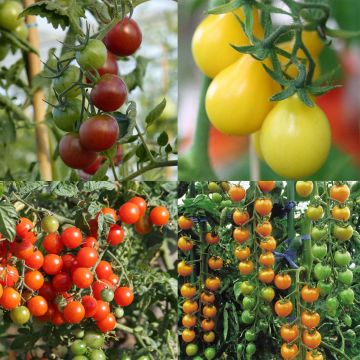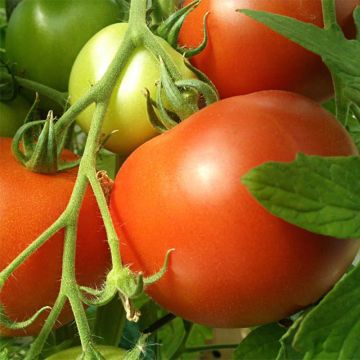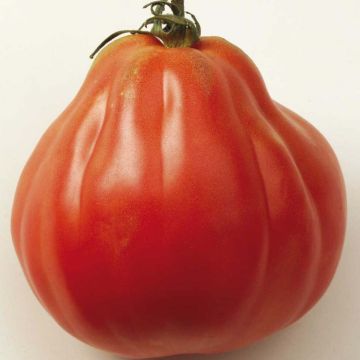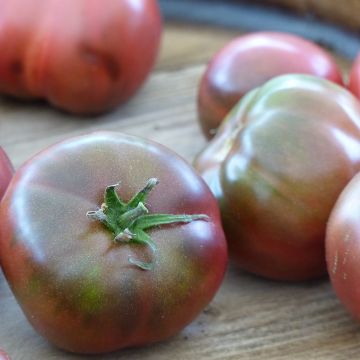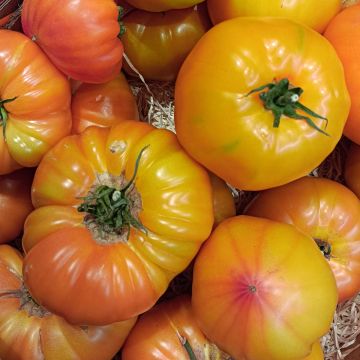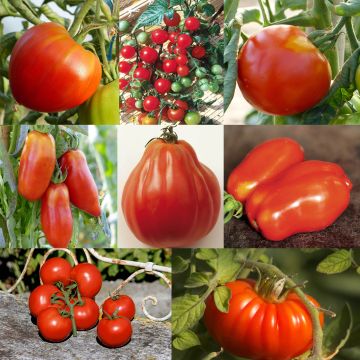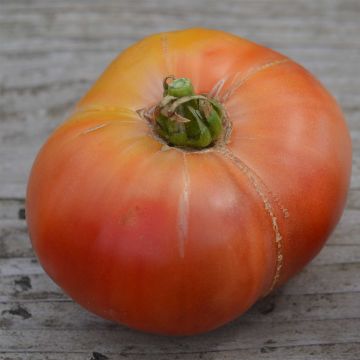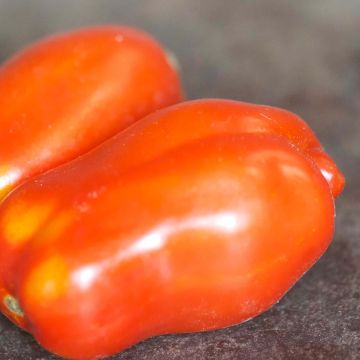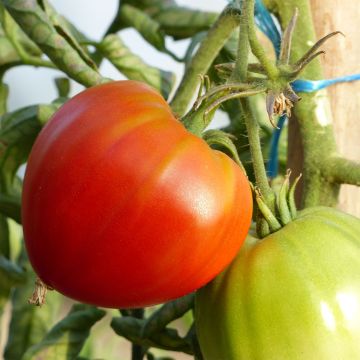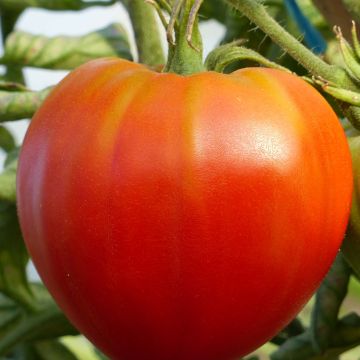
Growing Tomatoes Successfully
Sowing, planting, pruning, watering and potential diseases
Contents
The tomato is one of the emblematic vegetables of the kitchen garden. It has the advantage of providing excellent yields in a small space and being easy to grow as long as you follow a few simple rules. There are many varieties, distinguished by their size, colour, flavour… Tomatoes can be used in countless recipes and can be enjoyed both raw in salads or as appetisers, or cooked, stuffed, in quiches or ratatouille for example. Discover all our advice for sowing, planting, pruning and protecting tomatoes from diseases to ensure abundant harvests!
When and how to sow tomatoes?
Tomatoes are best sown in March, but plants intended for greenhouse cultivation can be prepared as early as February. Sowing should be done indoors or in a heated greenhouse, ideally at 20°C (minimum 16°C) in a seed tray or pots.
- Prepare pots, trays or seed trays by filling them with seed compost.
- Sow the seeds by scattering them on the surface.
- Cover them with a thin layer of compost.
- Water gently, using a watering can with a fine rose or a spray bottle.
- Remember to label your seedlings, especially if you’ve sown different varieties.
- Place the pots in a bright spot to prevent the young plants from becoming leggy (producing very thin, tall, etiolated stems). Ideally, place them near a window or in a conservatory.
- Keep the compost moist (but not waterlogged) until germination, which usually occurs after about a week.
- As soon as the seedlings have four leaves, transplant the strongest ones into individual pots.
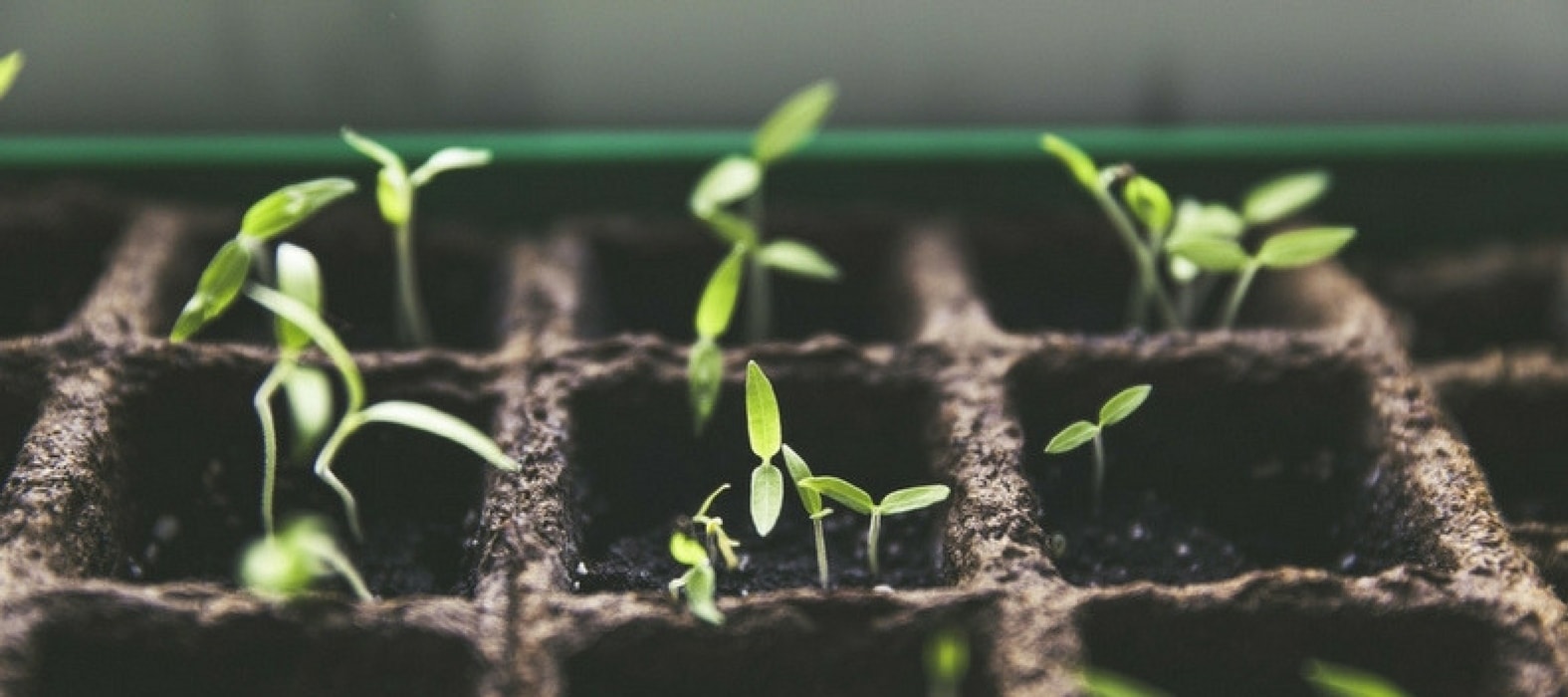
Sowing tomatoes in warmth
Read also
Sowing tomatoes and transplanting themWhere, When and How to Plant Tomatoes?
Planting in the garden should be done once all risk of frost has passed, typically after mid-May.
About two weeks before planting, remember to harden off your seedlings by gradually acclimatising them outdoors: start with a few hours in the afternoon, then gradually increase to full days.
Tomatoes need warmth and plenty of light to fruit. Plant them in a sunny spot, preferably in rich, light and well-draining soil, though they can tolerate fairly average soil. We recommend adding well-rotted compost or manure to enrich the soil.
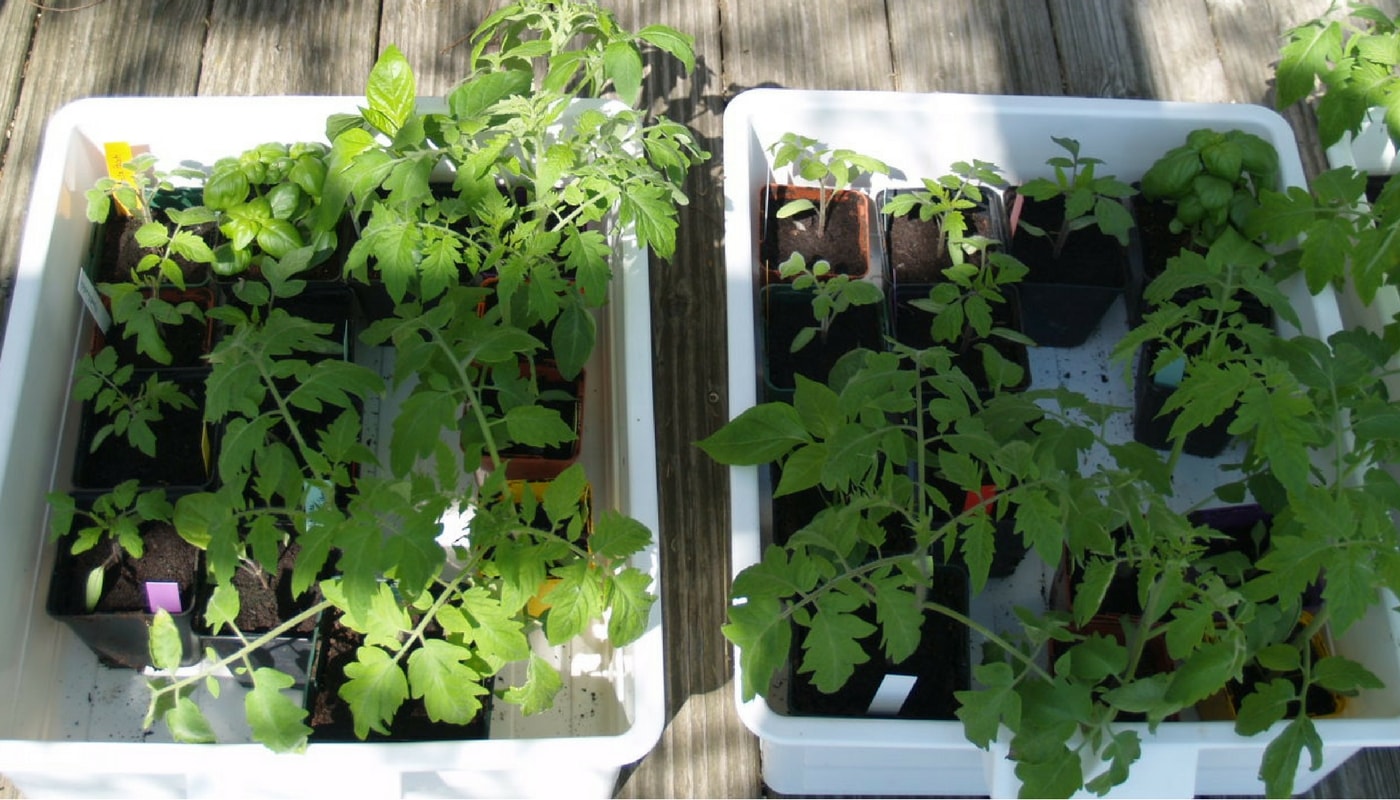
To harden off your seedlings: gradually expose them outdoors
Planting is done in previously loosened soil (or in large pots on a balcony). Space plants about 50 cm apart and they are usually staked (see our advice sheet: Staking Tomatoes)
To plant your tomatoes:
- Dig a hole 10 to 15 cm deep using a spade,
- Loosen the soil with a garden fork
- Place the seedling lying down or, if your soil is deep, bury it up to the first true leaves. The partially buried stem will produce new roots,
- Backfill and firm the soil around the plant to ensure good contact,
- Install a sturdy two-metre-high stake (except for determinate varieties) and tie it loosely (the stem will thicken), label the plant with a plant tag if growing multiple varieties and water thoroughly after planting.
Some gardeners place a handful of chopped nettles at the bottom of the planting hole to boost the young plant’s growth.
Discover other Tomato seeds
View all →Available in 1 sizes
Available in 1 sizes
Available in 1 sizes
Available in 1 sizes
Available in 1 sizes
Available in 1 sizes
Available in 1 sizes
Available in 1 sizes
Available in 1 sizes
Available in 1 sizes
How to pair tomatoes in the vegetable garden?
Traditionally, marigolds or Tagetes are planted at the base of tomato plants to protect them from nematodes. They also pair well with basil, cabbage and cucumbers.
However, avoid planting them near other nightshades like peppers, potatoes or aubergines.
Read also
Tomato: Blight, Other Diseases and PestsProperly sheltering your tomato plants in certain situations
In regions with cool or rainy summers, growing under cover (greenhouse, polytunnel or simple transparent rain cover) is recommended.
It’s worth noting that some varieties are well-suited to this type of climate, such as:

Tomato Moneymaker
- Height at maturity 1,80 m

Siberian Organic Tomato - Ferme de Sainte Marthe seeds
- Height at maturity 1,50 m
How to care for tomato plants?
Pruning
Tomato plants are traditionally pruned, except for those with a “determinate” growth habit that is naturally limited. Pruning is a debated topic with several approaches: it can range from simple to complex, gentle to severe. The benefits include increasing fruit size and improving air circulation to maximise sunlight exposure.
We recommend, at minimum:
- Remove “suckers”, meaning all new shoots growing in the leaf axils, as they appear. This directs the plant’s energy to the main branches and fruit clusters;
- Trim leaves touching the ground to prevent them from getting wet during watering, reducing the risk of blight.
Find all our tomato pruning advice in our guide: “Pruning Tomatoes and Their Training”
Watering
Tomatoes grown in open ground are relatively tolerant when it comes to watering, but don’t space out watering sessions too much. Always use water at room temperature and water at the base of the plants, avoiding wetting the foliage.
Potted tomatoes, whose growing medium dries out quickly, require very regular watering. A thick mulch will help reduce watering frequency while minimising weeding work.
For more information on watering tomatoes, follow our advice: “Watering Tomatoes: How to Do It”
What are the diseases affecting tomatoes?
Garden-grown tomatoes generally face only one major issue: blight. This is a fungal disease with well-known symptoms: dark spots on leaves that quickly spread to stems and then fruits. Plants exposed to humidity are highly susceptible, which is why we recommend growing tomatoes under cover in certain regions or choosing varieties that are not sensitive to it. There aren’t many, but the ‘Honey Moon F1’ tomato is one of the blight-resistant varieties, and its performance is remarkable!
As a preventive and curative measure, spray a solution of Bordeaux mixture (2 grams per litre of water) and repeat the treatment after each rainfall. In the long term, practice good crop rotation by not planting tomatoes in the same spot for at least 5 years.
Some tomatoes may also develop blossom-end rot: the “black bottom”. This isn’t actually a disease but a disorder caused by a calcium deficiency. To prevent this, water moderately but more regularly.
To learn all about tomato diseases and how to treat them, follow our detailed advice: “Tomatoes: Blight, Other Diseases and Pests – Identify, Prevent, Treat”
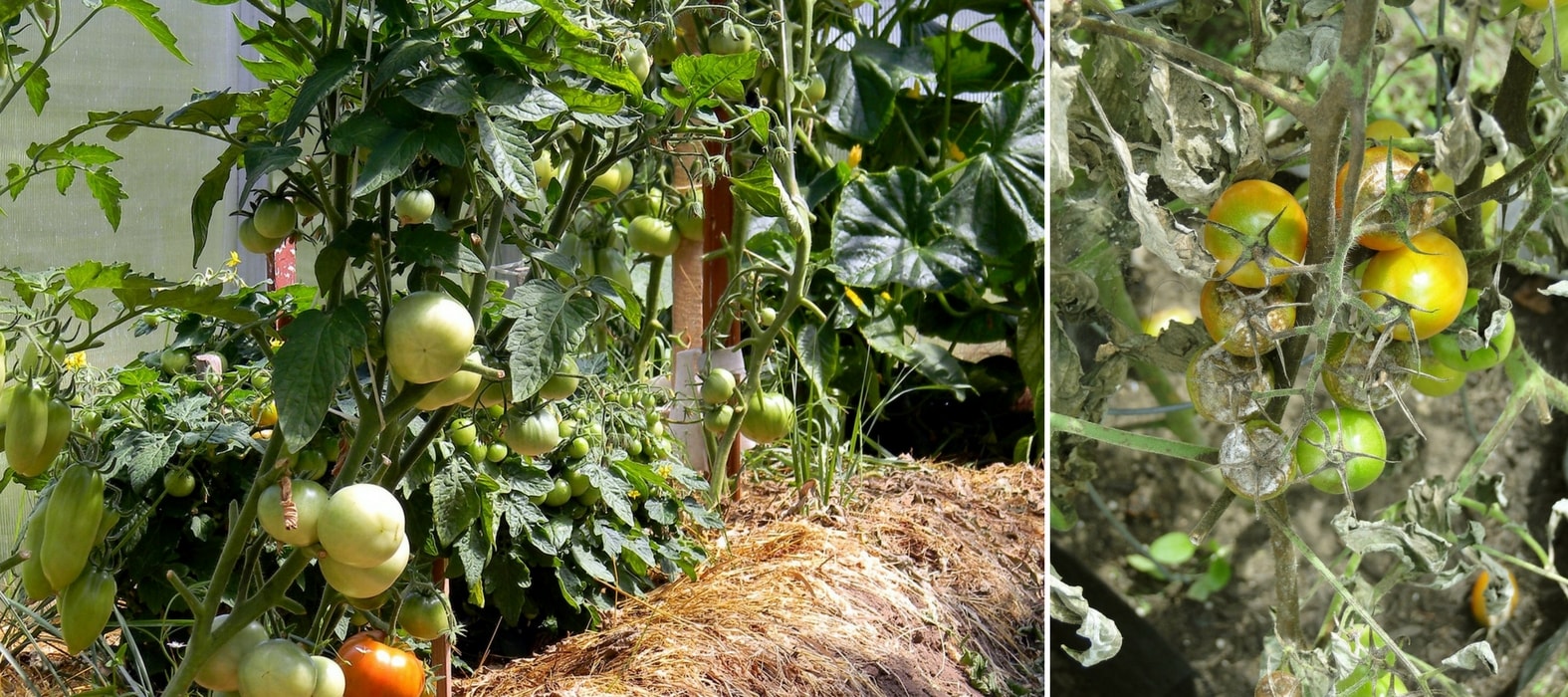
Growing tomatoes under cover, an effective way to avoid blight
When to harvest tomatoes?
Depending on the variety, early or late, harvesting takes place 50 to 100 days after planting. A ripe tomato reaches its expected colour and, while remaining firm, shows a slight softening. For better preservation, pick the fruits with their stalks attached.
Discover our advice sheet for making sun-dried or confit tomatoes with your own tomatoes.
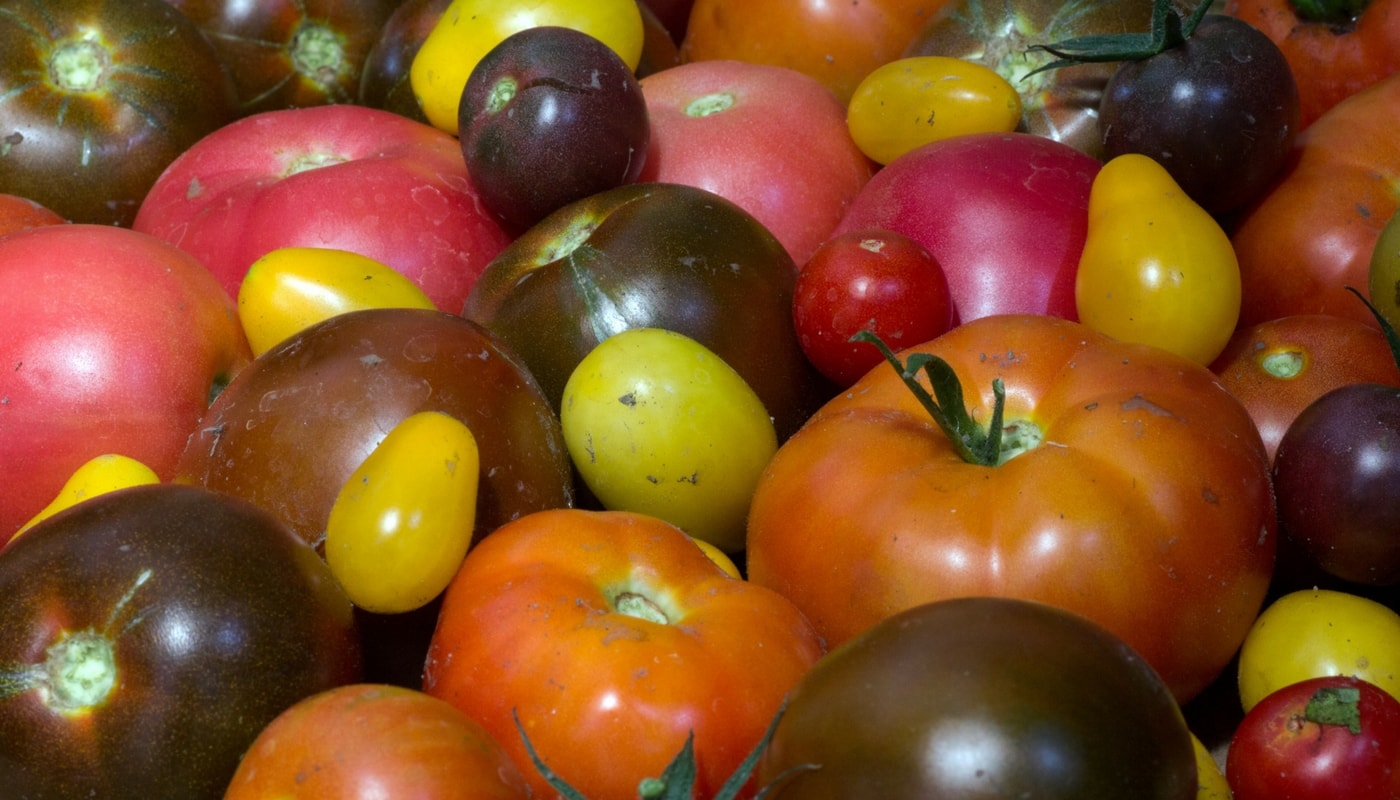
Harvest time
- Subscribe!
- Contents


































